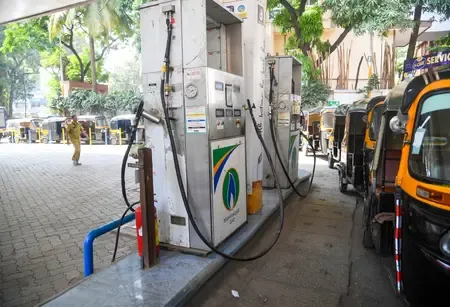Will Indian City Gas Distribution Firms See an 8-12% Rise in Operating Profit This Fiscal?

Synopsis
Key Takeaways
- Projected operating profit of Rs 7.2–7.5 per scm for CGD firms.
- Increase of 8-12 percent compared to previous fiscal's second half.
- Transition from spot market to contracted supplies is crucial.
- APM gas allocation for CNG segment fell to less than 40 percent.
- Companies are investing in infrastructure expansion to support future growth.
New Delhi, Nov 20 (NationPress) According to a recent report, city gas distribution (CGD) firms in India are anticipated to achieve an operating profit ranging between Rs 7.2–7.5 per standard cubic metre (scm) this fiscal year. This marks an increase of 8-12 percent compared to the latter half of the previous fiscal year, during which profit margins decreased due to a sudden and significant reduction in gas allocations under the administered price mechanism (APM) for the compressed natural gas (CNG) sector.
As a result, distributors were compelled to resort to the spot gas market for their supply needs, causing a notable rise in costs. However, these companies have since shifted to contracted supplies, which is projected to enhance their profit margins.
Healthy earnings are expected to maintain leverage at manageable levels, despite the planned capital expenditures (capex) by these firms. An analysis by Crisil Ratings of seven CGD companies, which account for 70 percent of the total sales volume last fiscal, supports this outlook.
CGD companies prioritize receiving gas at lower prices from legacy fields under the APM to cater to domestic CNG and piped natural gas-domestic (PNG-D) markets.
In addition to APM gas, they also procure high-pressure, high-temperature (HPHT) gas and imported regasified liquefied natural gas (R-LNG) through both contracted and spot purchasing methods.
According to the report, during the latter half of last fiscal, APM allocations for the CNG segment fell to less than 40 percent of the overall CNG demand, down from 70 percent in the first half of that year.
This led to a significant surge in procurement costs, as companies leaned on spot purchases, which were 80-100 percent costlier than APM prices, to mitigate supply disruptions.
Consequently, spot purchases as a share of total supplies jumped to over 15 percent, up from 5 percent in the first half of the previous fiscal.
“In response to the 30 percent reduction in APM allocation for the CNG segment, CGD companies managed to secure 15-20 percent long-term allocations from new well gas, primarily towards the end of last fiscal or the beginning of this fiscal. For the remaining requirement, they have entered into additional medium and long-term contracts, mainly for HPHT gas and R-LNG,” stated Ankit Hakhu, Director of Crisil Ratings.
This strategy aims to not only bolster gas security but also to lessen reliance on the spot market, where prices are typically 25-30 percent higher on average.
The report highlights that revenue generation remains stable this fiscal, following a price increase in the second half of the last fiscal year, allowing companies to gradually and partially pass on the rising costs to consumers.
Nevertheless, some advantages from reduced gas procurement costs in the current fiscal year are expected to be counterbalanced by an uptick in other operational expenses, as companies continue to invest in expanding gas infrastructure across existing and new geographical areas (GAs) to support future volume growth.









